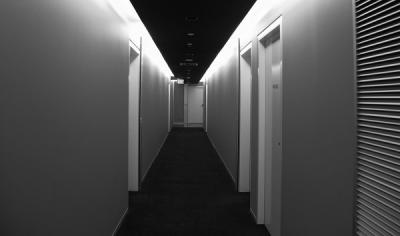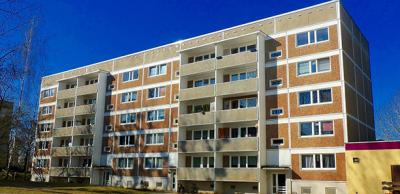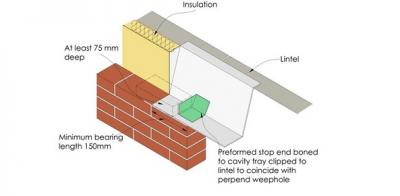The dos and don'ts of mains powered smoke alarms and battery alarms
Most properties in the UK have battery-operated smoke alarms, but mains powered smoke alarms interlinked between floors are the most reliable method of giving early warning in case of fire and must now be installed in all new homes.
Mains-wired smoke alarms are also required in certain types of alteration and extension work. Mount them in the circulation space at every floor level:
- In loft conversions
- When adding new habitable rooms (bedrooms, kitchens, living or dining rooms) above ground floor level
- When adding a new habitable room at ground floor level that doesn’t have its own exit leading outdoors
Installing new interlinked smoke alarms can be disruptive, so think about the need for detection before you start work. Radio-linked alarms are acceptable; as long as the manufacturer can guarantee the battery back-up will last for 72 hours.
Smoke alarm DOs:
- Ensure there's at least one alarm on every storey of the dwelling
- Ensure there's an alarm within 3m of the door to every bedroom.
- Provide a heat detector to the kitchen if it's open plan to the escape route
- Mount them 300mm away from walls and light fittings
- Ensure the electrical installation of the units meets Part P requirements in England and Wales
- Provide instructions to the end user
Smoke alarm DON'Ts:
- Install them above staircases where testing and maintenance is dangerous
- Site them in places where they can become very hot, cold, or subject to a lot of moisture or fumes (bathrooms, kitchens, garages - use a heat detector if need be)
Remember, there are additional requirements for large houses of two or more storeys where one of those storeys exceeds 200m2, so bear this in mind when working on footballers' mansions! If in any doubt, contact your local authority building control team to discuss.
Further information about fire safety
- View a diagram showing where to place smoke alarms and heat alarms
- Download the SCA Guidance on Smoke Control to Common Escape Routes in Apartment Buildings (Flats and Maisonettes)
- Read the Building Regulations Part B Approved Document on Fire Safety for dwellings in England and Wales
Also view: How to protect residents from carbon monoxide poisoning
Please Note: Every care was taken to ensure the information was correct at the time of publication. Any written guidance provided does not replace the user’s professional judgement. It is the responsibility of the dutyholder or person carrying out the work to ensure compliance with relevant building regulations or applicable technical standards.
This article was updated on August 2024
Sign up to the building bulletin newsletter
Over 48,000 construction professionals have already signed up for the LABC Building Bulletin.
Join them and receive useful tips, practical technical information and industry news by email once every 6 weeks.
Subscribe to the Building Bulletin





Comments
Reply to: Smoke alarm location
Submitted 6 years ago
Yes, there is a requirement that detectors should not be mounted adjacent to, or directly above, heaters or air conditioning vents.
Regards,
John, LABC
Smoke / Heat Alarm Placement
Submitted 6 years ago
I understand restricted air flow from pendants/hanging lights etc. But, considering most downlights are now LED, do you think heat convection from halogen, EMI from fluorescent lights etc still applies in this day and age.
Smoke Alarm Fittings
Submitted 5 years 10 months ago
I am wondering if there is any regulations on how to install smoke alarms to a ceiling. Can they be fixed with Velcro and still be compliant or do they have to be fixed with screws?
Thank you
Re: Smoke Alarm Fittings
Submitted 5 years 10 months ago
The smoke detectors need to be installed in accordance with the manufacturers recommendations and their testing/approvals. They are usually fixed by screws.
Regards,
John, LABC
inter connecting smoke alarms
Submitted 5 years 10 months ago
I have BRK 670 MBX mains interlinked about my bungalow they are a mushroom colour, Can I still mains wire interlink them if I replace one with an Aico Ei141RC which are white in colour. I realise the BRK plug will have to be removed at it junction box and wire to the Aico , question is will the interconnect work or do I need to replace all to one make or another.
Reply to: inter connecting smoke alarms
Submitted 5 years 10 months ago
For your specific set-up it would be best to seek advice from your local building control team. Find them here: https://www.labc.co.uk/your-local-council-building-control-department — simply enter the postcode of your property and click 'Search'.
Kind regards,
LABC
Interlinked smoke alarms
Submitted 5 years 9 months ago
Reply to: Interlinked smoke alarms
Submitted 5 years 8 months ago
Assuming your query is regarding a dwelling, the smoke alarms required as a result of the loft extension must be mains powered but can be interconnected wirelessly, provided that this doesn't reduce the lifetime or duration of any standby power below 72 hours.
Kind regards,
LABC
Interlinked System energy usage
Submitted 5 years 8 months ago
Mains powered
Submitted 5 years 8 months ago
We have had an extension which adds an upstairs bedroom and we have removed an internal wall which means there is no door between the kitchen and the stairs. The house is only 2 floors. We plan to add a heat alarm in the kitchen, a smoke alarm in the livingroom and one in the upstairs hall. These will all be wirelessly linked. Do all alarms need to be mains powered or is it okay if only one is mains and the others are 10y battery? Its suprising they cant all be 10y battery as they need to be replaced every 10y anyway. Thanks.
Add new comment